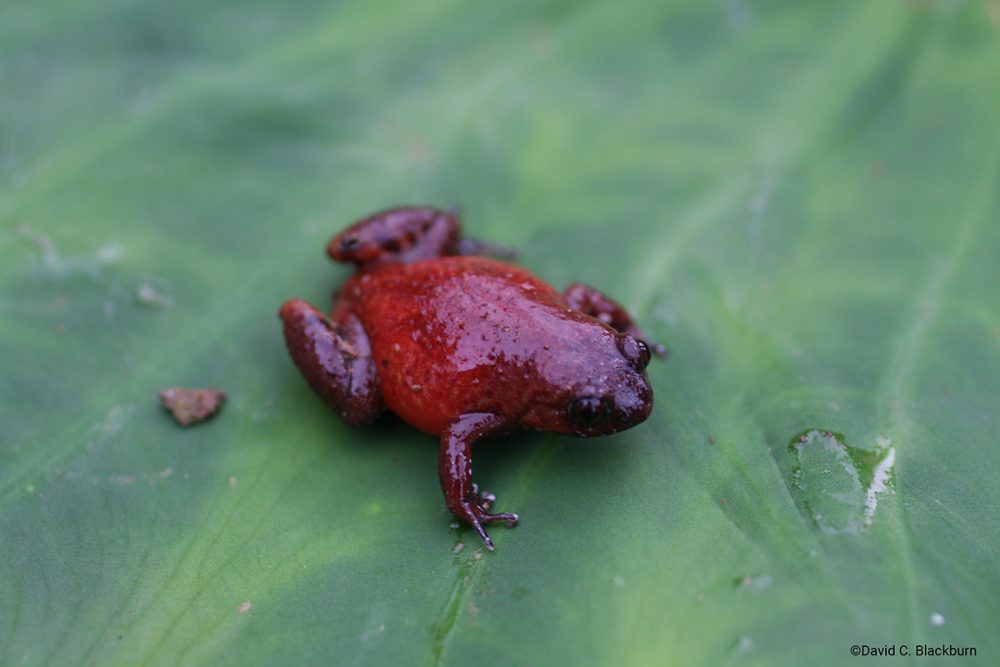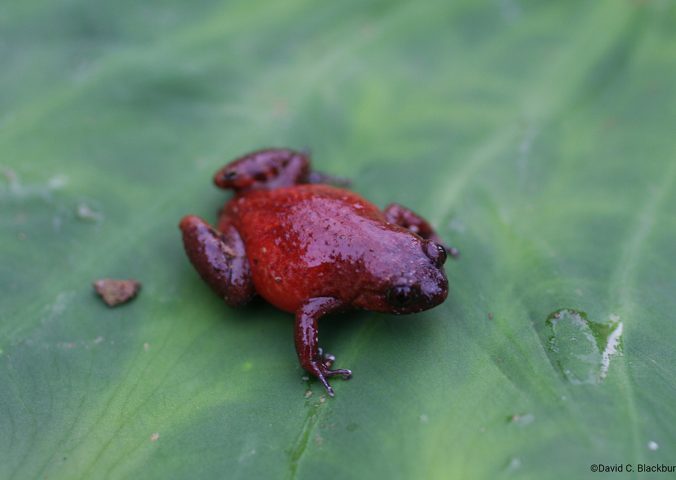About
The redbelly egg frog is known only from a tiny area of the Cameroonian Highlands. This species has been found in a variety of places within its montane forest habitat, including streams, ground holes, humus, gravel, root masses and dense undergrowth.
The redbelly egg frog is presumed to breed in streams and was previously thought to be abundant within its restricted locality. However, there are signs of population decline since 2010. Information about this species is limited because it has been little-studied since it was formally described as a new species in 1971.
The egg frog genus Leptodactylodon diverged from all other amphibians about 70 million years ago, during the Late Cretaceous. This was around 5 million years before the extinction of the dinosaurs, making them as closely-related to other frogs as camels are to whales!
The major threat to this species is increasing habitat loss as a result of agricultural encroachment, including plantations of tree crops; expanding human settlements; and removal of wood by local people for firewood and building materials. The use of herbicides and pesticides here is suspected to have long-term effects on the stream habitat, affecting this frog’s larval stage, and this threat is expected to increase as human activity in the area increases.
Unfortunately, this species does not occur in any protected areas. The protected area network in western Cameroon urgently needs to be expanded to include the remaining montane forest habitats, particularly those on Mount Manengouba, which has been proposed as a protected area.
- Order: Anura
- Family: Arthroleptidae
- Population: Abundant
- Trend: decreasing
- Size: 21.5-24.6
EDGE Score
Distribution
This species may only be found on the south-eastern slopes of Mount Manengouba in western Cameroon, at an altitude of 1,550-1,800 metres above sea level.
Habitat and Ecology
The redbelly egg frog is found in submontane and lower montane forest. It has been observed around springs and streams, living in humus, gravel, root masses and dense undergrowth. Because of its known presence in flowing waterbodies, it is presumed that this frog breeds in streams, where its eggs hatch into tadpoles.


